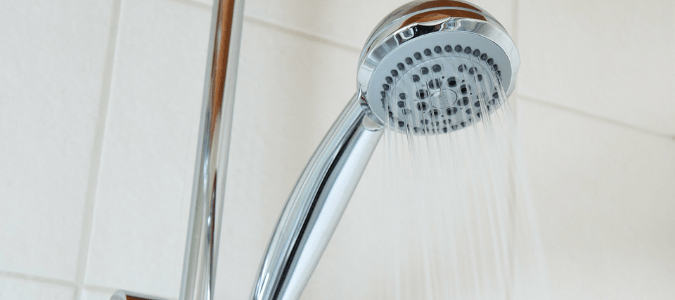
Many homeowners have experienced that same unfortunate situation: You’ve been waiting for the shower to heat up for ten minutes and it’s still lukewarm. No one else has used the shower recently, and no one is doing the dishes or otherwise using up all the hot water. What is the issue? Is your gas water heater not hot enough?
If you find yourself in this situation, there are usually three common culprits: a broken dip tube, a buildup of sediment in your tank or a malfunctioning heating system.
Broken Dip Tube
The dip tube is the part of your water heating system where cold water enters the heating tank. Usually, your dip tube will deliver cold water to the bottom of your tank where it can be easily and quickly heated for your use. If your dip tube is broken, cold water will stay at the top of your tank and will not get heated correctly. Because your water outlet is also located at the top of your tank, that cold water will flow straight from your dip tube through the outlet, leaving you with cold water.
You may also have a broken dip tube if your hot water runs out much more quickly than usual.
Sediment Buildup In The Tank
Often the water that enters your tank carries some dissolved minerals and other particles with it. Over time, these particles settle down to the bottom of the tank, where the heating element is located. This buildup of debris can make it more difficult for your water to heat up, causing lukewarm or cold water to flow through your pipes.
Faulty Heating System
A gas water heater can last anywhere from 6 to 10 years. With proper maintenance, you may be able to keep your water heater in service for up to 15 years. Usually, it will be a broken heating element, thermostat or gas valve that leads a homeowner to consider a replacement.
Because water heaters are complex systems, it is usually recommended that you call in a professional plumber who can quickly and properly diagnose your problem, then remedy it. However, if you’re looking for some ways you can do it yourself, we’ll review with you how to troubleshoot water heater problems, what other water heater problems homeowners commonly come across and give you a recommended maintenance schedule so you can extend the life of your water heater.
To understand how to troubleshoot water heater problems, you’ll first have to understand the inner workings of a gas water heater.
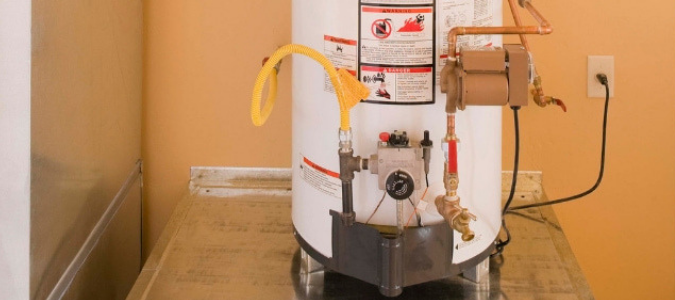
How Does A Gas Water Heater Work?
The different components of a conventional water heater and what their job is within the system include:
- The tank: This is the inner shell of the water heater and also what is most visible. This is where the water gets heated, and where water remains until it’s ready for use. As you might expect, tankless heaters don’t hold water but rather heat it on demand.
- The dip tube: As previously mentioned, this is how the water enters the tank and gets sent down to the bottom of the tank where it gets heated.
- The shut-off valve: This component stops water flow into the water heater. It is located outside and above the unit.
- The heat-out pipe: This piece allows water to flow out of the water heater and is located at the top of the system.
- The thermostat: Similar to how your air conditioner’s thermostat controls the indoor temperature, this part regulates how hot or cold the water in the water heater is.
- The heating mechanism: Located underneath the tank, this component is what heats the water up. With gas water heaters, there will be a burner and chimney system.
- The thermocouple: This component automatically shuts off the gas when the water heater pilot flame goes off.
- The drain valve: This valve is located near the bottom of the tank and is used to remove sediment that may have settled in the system. This valve also makes it easier to empty the tank and move it to a different location.
- The pressure relief valve: This component ensures that the pressure inside the water heater stays at a safe level.
- The sacrificial anode rod: This part is composed of a steel core wire with one of three different metals wrapped around it: aluminum, magnesium or zinc. This rod is “sacrificial” because the water will corrode the metal wrapped around the rod before corroding the water heater itself.
Gas water heaters work because of convection, which essentially means hot water and air rises. When the dip tube pushes cold water to the bottom of the tank, the heating element begins to heat up that cold water. As it warms, it rises to the top of the tank, where it is pulled out by your heat-out pipe. Most of us have had the experience of running out of hot water. When this happens, it is because we’ve used the hot water in our tank at a rate that is too fast for it to heat more water.
Unfortunately, having a gas water heater that doesn’t get hot enough isn’t the only common problem that homeowners find themselves confronted with.
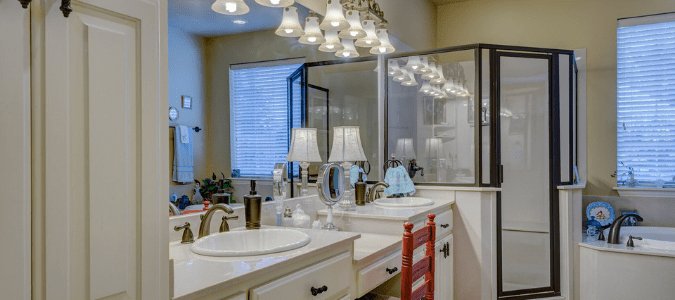
Common Water Heater Problems
While having your gas water heater not hot enough is certainly a common issue, there are many other common water heater problems. Some of the issues homeowners come across include:
- No hot water
- Running out of hot water faster than before
- Not enough hot water
- Water temperature too hot or too cold
- Leaking hot water
- Water takes too long to reheat
- Pilot will not light or will not stay lit
- Water heater is making a popping noise or other strange noises
- Rusty colored water
- Smelly hot water or water that smells like rotten eggs
Some of these common problems are a sign it’s time to invest in a new water heater. If your water is an orange-red-brown color, that is a sign that the inside of your water heater is starting to become rusty, and rusted water heaters can result in leaks, which brings us to the next sign that your water heater needs replacing: water is leaking. This means there is a crack in your water heater and the corrosion process may have already irreversible damage.
If you’re experiencing one of the other common water heater problems, there are a few ways you can troubleshoot your issue.
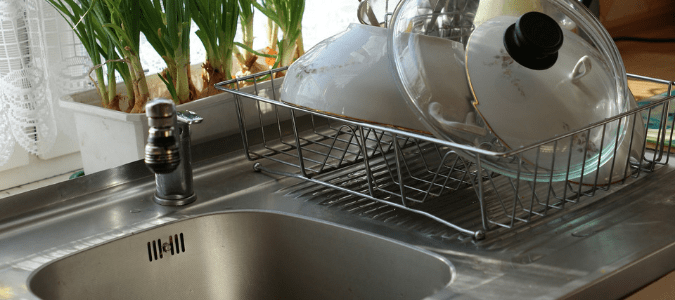
Water Heater Troubleshooting
With all water heater issues, there are a few things you can check before calling in a plumber. You can make sure your pilot light is on, check your thermostat and thermocouple, drain your tank and replace your anode rod.
Based on which water heater problem you’re having, there are a different set of steps you can take to attempt to resolve the issue.
No Hot Water
If you don’t have any hot water, it is likely because your pilot light is not lit, which is actually a pretty quick and easy fix. Here are the following steps to get the hot water running again:
- Turn the pilot control knob to OFF.
- Wait ten minutes for the burner to cool down and allow any gas from the pilot to air out.
- While you’re waiting, check to see if your model of gas water heater has a red button on it called a spark igniter. Newer models usually have this button, so if you know you have an older model or can’t find this button, you’ll need to find either a match or a barbecue lighter to get your pilot light on.
- Turn the pilot control knob to LIGHT.
- Light a match or prepare your lighter (for the manual water heaters only).
- Press down on the pilot knob and hold it down while lighting the pilot, either manually or by pressing your spark igniter.
- Ensure that the pilot flame is burning by continuously pressing down on it for thirty seconds to a minute.
- Release the pilot knob then turn it to ON.
- Watch the pilot for a bit to ensure that the pilot is still on. If not, repeat the process one or two more times.
Pilot Light Will Not Light Or Will Not Stay Lit
For either of these issues, you likely have a broken or defective thermocouple. Testing whether or not a thermocouple is broken requires special equipment, so when dealing with this problem it’s often easiest to call in a reputable, licensed plumber.
Not Enough Hot Water Or Water Taking Too Long To Reheat
Do you have house guests? Or did you just install a new appliance that’s bigger and has more features than your last model? Either of these things could lead you to consume more hot water than usual, which would be the reason you don’t have enough water.
If you’re in neither of these situations, you may need to increase the temperature on your thermostat. If you increase your water heater temperature to 125 degrees Fahrenheit, that should solve your problem. Setting the temperature much higher can result in scalding water coming out, which is something no homeowner wants. If this doesn’t work, you either have a faulty thermostat or a buildup of sediment in your tank. With regular water heater maintenance, a buildup of sediment won’t be your problem.
Lastly, if you’ve had your water heater for over ten years, it may just be old and slowly losing its capabilities.
Water Temperature Too Hot Or Too Cold
Your water heater thermostat should be set to 125 degrees Fahrenheit. If you feel it is too hot, adjust the thermostat to your desired temperature. As we already mentioned, avoid setting the temperature any higher than 125 degrees, since doing so will put you at risk of burn injuries.
Smelly Hot Water
If you have stinky water, try replacing your anode rod. What’s probably happened is that the anaerobic bacteria that exists in some water has reacted with the sulfur and the magnesium or aluminum in your rod to produce hydrogen sulfide gas, which creates a rotten egg odor.
Thankfully, there are ways to keep your water heater in tip-top condition which can even potentially extend the life of your water heater. Of course, if you don’t have much experience with either plumbing or electrical work, your best bet is to hire a licensed plumber to maintain your water heater for you.
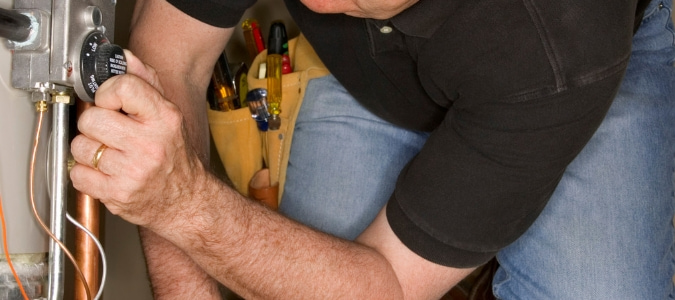
Water Heater Maintenance Schedule And Tasks
The best way to extend the life of your water heater is through proper maintenance. Here are a few things you can do to help your water heater live a long and healthy life.
Drain Your Tank
To prevent the buildup of sediment, drain about a quarter of your tank a few times a year. To do this, you’ll start by turning off your cold water supply, then hooking up a garden hose to the drain valve. Let the water run into a bucket until the water runs clear. If the water is continuously running cloudy, quickly open the water supply valve to stir up any remaining sediment. Another benefit of draining your tank is that it can also make your water heater run quieter.
Check Your Sacrificial Anode Rod
You should examine your sacrificial anode rod at least once every three years. You can do this by loosening the hex head screw and removing it. You should consider replacing the rod if more than six inches of the core steel wire is exposed, the rod is less than half an inch thick or if the rod is coated with calcium.
While some of these maintenance tips sound relatively easy, if done incorrectly, you can cause damage to your water heater or its components, which can lead to water damage in your home.
ABC Can Service Your Water Heater
Gas water heaters can be tricky because they don’t just have plumbing components—they have electrical components as well. If you are feeling any hesitation about addressing your gas water heater problems on your own, call in a professional with the knowledge and expertise to operate on your system with the utmost of confidence. When homeowners experience plumbing problems, they know they can rely on ABC Home & Commercial Services. We pride ourselves on providing reliable service, and our licensed plumbers are even available 24/7! We understand that plumbing problems can be intimidating, so by contacting ABC, you’ll get peace of mind since you know the job will be done right.
